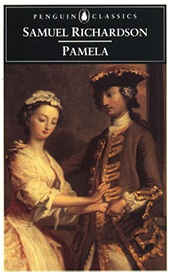One of the key questions a writer must come to terms with right from the beginning is—how is the story to be told? What is “the Point of View,” also known as POV? Is it me or he/she? That’s to say does one start off by writing, “She woke one morning,” or “I woke one morning.”?
The options are many.
The epistolary novel—in which a story is told with a series of letters—had its first major success in the English language with Samuel Richardson’s Pamela in 1740. The format is still used and may be found in such modern novels as 1982 The Color Purple by Alice Walker.
My recent Loyalty was written in the first person, but is broken down chronologically, almost like journal entries, something like—but not truly—an epistolary novel.
When British novelist Wilkie Collins published The Moonstone in 1868 he wrote what is considered a highly innovative detective fiction. If I can trust my memory, I believe it was T.S. Eliot (of all people) who said it was the best detective story ever written. It had a considerable impact on countless mystery novels that followed.
But aside from the inventive sleuthing, Collins did something else new: the story was told from multiple points of view. That’s to say, the story was told in the first person but from a number of different persons.
 In The Murder of Roger Ackroyd, the 1926 mystery by Agatha Christie, the narrator (and presumptive detective) of the murder mystery is the character Dr. James Sheppard. It is “Sheppard” who tells the tale in a first-person voice. Only in the last chapter is it revealed that he is the murderer. The book—and the concept— of the “unreliable narrator”—caused something of a literary scandal.
In The Murder of Roger Ackroyd, the 1926 mystery by Agatha Christie, the narrator (and presumptive detective) of the murder mystery is the character Dr. James Sheppard. It is “Sheppard” who tells the tale in a first-person voice. Only in the last chapter is it revealed that he is the murderer. The book—and the concept— of the “unreliable narrator”—caused something of a literary scandal.
These days the “unreliable narrator” is no longer unusual and is a literary technique there for the writer to use and quite often is. (I suspect it’s because we—as a society—no longer have much trust in anything.)
Over my years as a writer, I have used a variety of formats. Sometimes I don’t even think about it. I just begin—in a crudely intuitive way—and set out along the plot’s journey with one POV or another. (Nothing but the Truth has many points of view.)
Every now and again, as I work my first draft, I get a nagging feeling that something is not going well. Generally, it is truly a nagging feeling, obscure, and annoying as all get out because it’s not clear what I’m doing badly.
Then I recall what an editor once said to me when she rejected a book of mine. She said, “It lacked salt.”
She was telling me “It lacked energy.”
And indeed, after a long time of thought and struggle, I turned that particular book—City of Light, City of Dark into a graphic novel. Now there was a change of POV!
So, perhaps instead of POV, it might be better to speak of The Voice of the Story. Not the voice of the writer—but the voice of the story. Find it and you can give your story life. The right POV brings energy, and truth of being to the text—and most of all to the characters.
That, I think, more than anything, draws the reader in, (and hopefully) holds them.
In short, the POV is one of the most important choices a writer can make.
And that’s why regarding the book I’m currently working on I just changed the POV.
Pass the salt.





